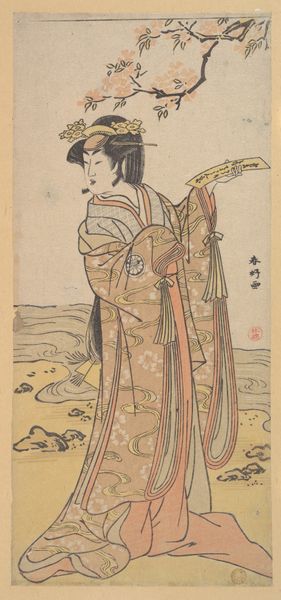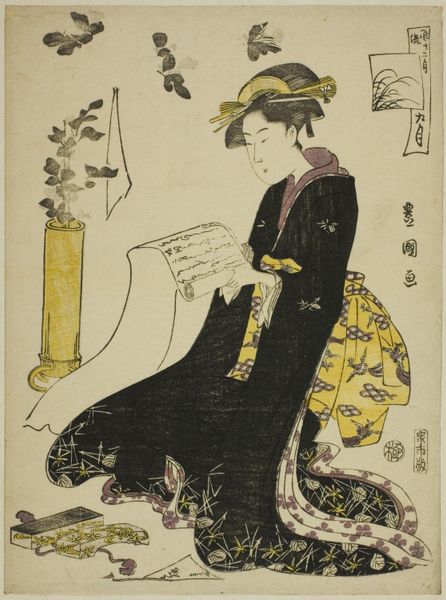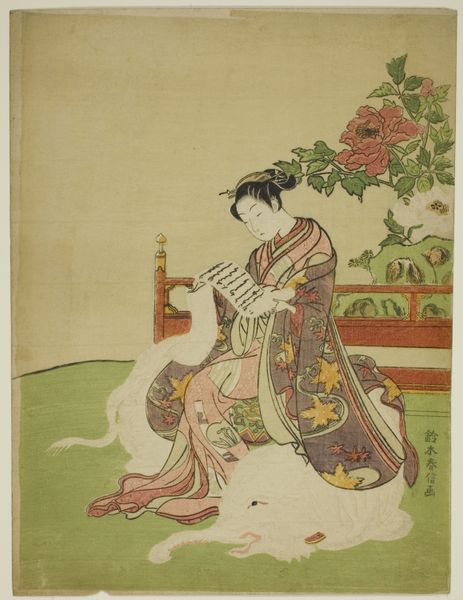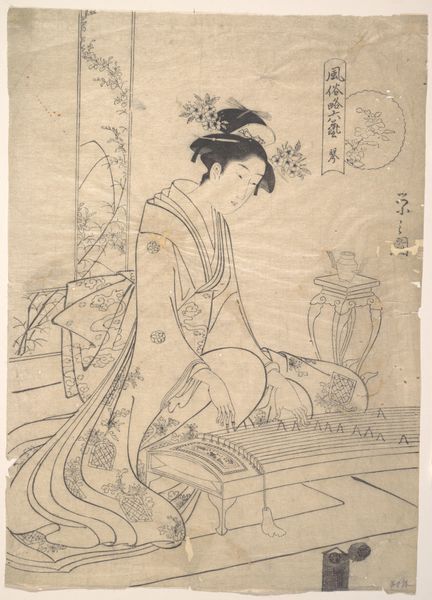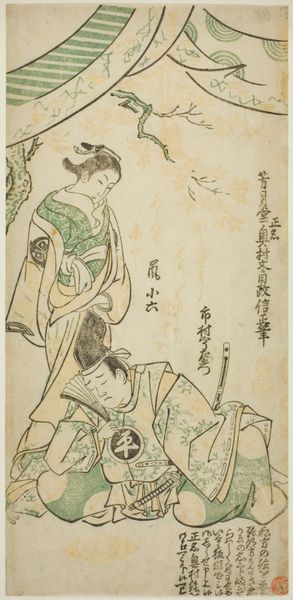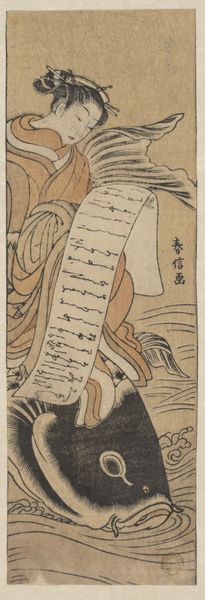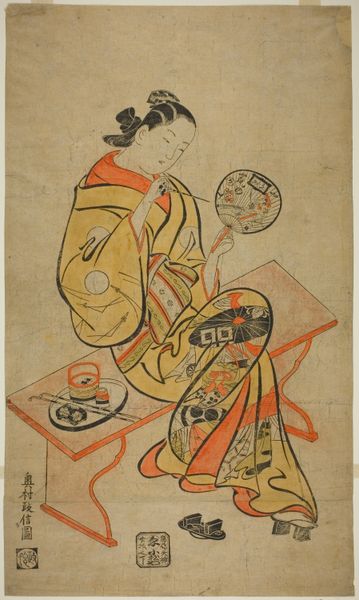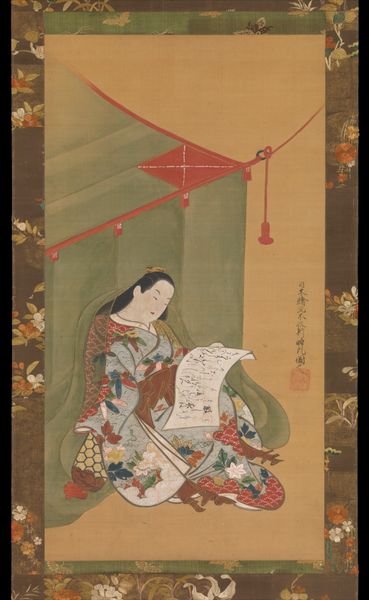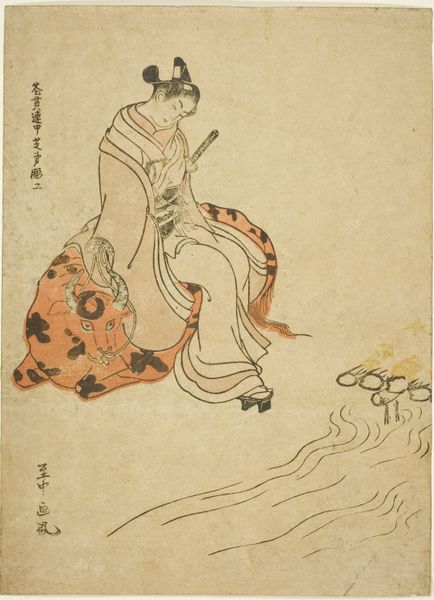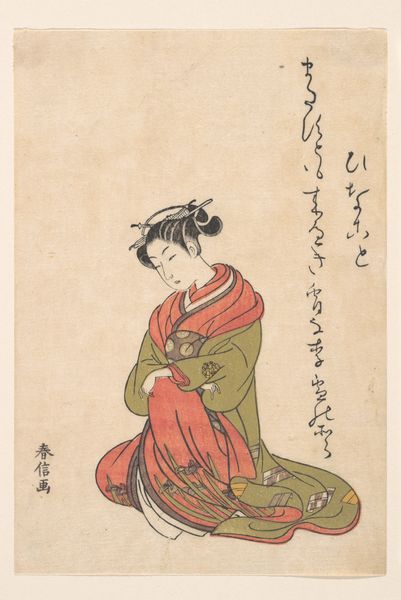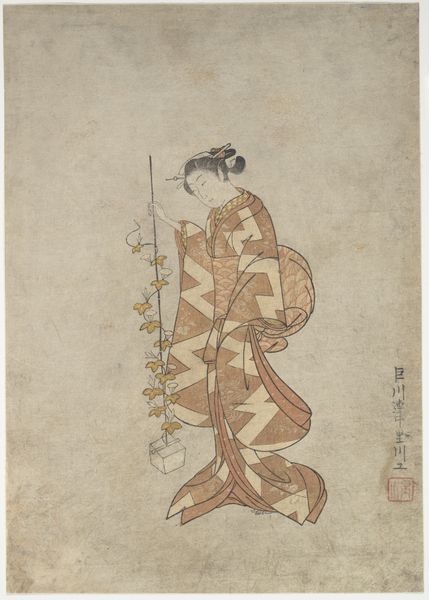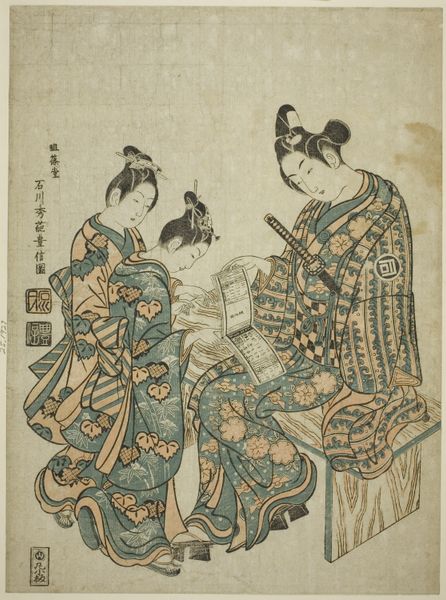![Girl Riding a Crane (parody of Hi Chobo [Chinese: Fei Zhangfang]) by Suzuki Harunobu 鈴木春信](/_next/image?url=https%3A%2F%2Fd2w8kbdekdi1gv.cloudfront.net%2FeyJidWNrZXQiOiAiYXJ0ZXJhLWltYWdlcy1idWNrZXQiLCAia2V5IjogImFydHdvcmtzLzY4ZGUzMzYwLWEyNDAtNDMyNy05MDI5LThiNjZhODIyYzZkMC82OGRlMzM2MC1hMjQwLTQzMjctOTAyOS04YjY2YTgyMmM2ZDBfZnVsbC5qcGciLCAiZWRpdHMiOiB7InJlc2l6ZSI6IHsid2lkdGgiOiAxOTIwLCAiaGVpZ2h0IjogMTkyMCwgImZpdCI6ICJpbnNpZGUifX19&w=3840&q=75)
Girl Riding a Crane (parody of Hi Chobo [Chinese: Fei Zhangfang]) c. 1766 - 1767
0:00
0:00
print, woodblock-print
#
portrait
#
ink drawing
# print
#
asian-art
#
ukiyo-e
#
figuration
#
woodblock-print
#
line
#
genre-painting
#
calligraphy
Dimensions: 27.5 × 20.0 cm (10 7/8 × 7 7/8 in.)
Copyright: Public Domain
Curator: Let's consider this woodblock print dating to around 1766 or 1767, "Girl Riding a Crane (parody of Hi Chobo [Chinese: Fei Zhangfang])" by Suzuki Harunobu. Editor: There's such delicacy to this image, it feels airy and poised, almost weightless, but something also feels… strange. I'm intrigued by the composition, this figure perched so unusually on the back of the crane, reading what looks like a long scroll. Curator: The strangeness, as you say, could be the result of the print’s function as a *mitate*. These types of images playfully recast classical and literary themes within a contemporary, often satirical context. The title alludes to a Chinese immortal, so it engages with ideas of transcendence and societal aspiration, but filtered through Harunobu's present. The woman isn't truly ascending to heaven, is she? The act of parody hints at specific courtly gender norms that were either subtly challenged or simply given another interpretation at the time. Editor: That's fascinating. I see the crane— a bird long associated with longevity and good fortune in East Asian art—presented here more as a mode of transport for this woman in fine robes, engrossed in her reading. It creates a dialogue between the ancient symbolic meaning of the crane, and its somewhat deflated presence. This inversion invites reflection upon evolving cultural values, right? The long, elegant lines and restrained colour palette—it emphasizes detail in the bird's features—further complicate how the crane symbolizes cultural memory and personal expression, particularly for women. The tension makes you want to find meaning behind this visual vocabulary. Curator: Absolutely. And the woman's concentrated gaze on the scroll suggests intellectual pursuit and challenges the limited social and educational options accessible to women in that society. It offers a commentary on the societal roles they were expected to inhabit. Even details like her kimono pattern, which feature cherry blossoms and other motifs, would subtly place her within a social and political web. Harunobu wasn't just depicting beauty; he was embedding layers of social awareness. Editor: It makes one question what she is reading. We understand her placement in the larger world by trying to extract details on the surface in order to discover larger patterns. This gives me an incentive to look more deeply at symbols, not just aesthetics. Curator: It's a complex work—engaging in ways beyond a superficial reading. It highlights the nuances that emerge when we consider art as active participant in social and political conversations. Editor: Agreed. Harunobu’s print is a brilliant example of how visual imagery creates memory— and the need to ask "why now?" "why this?".
Comments
No comments
Be the first to comment and join the conversation on the ultimate creative platform.
